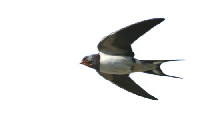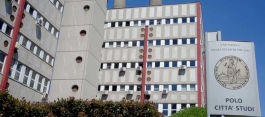
Circannual rhythms often rely on endogenous seasonal photoperiodic timers involving "clock" genes, and Clock gene polymorphism has been associated to variation in phenology in some bird species. In the long-distance migratory barn swallow Hirundo rustica, individuals bearing the rare Clock allele with the largest number of polyglutamine repeats found in this species show a delayed reproduction and moult later.
We are currently investigating the role played by the genetic polymorphism at candidate phenological genes in shaping migration traits, and their role in controlling phenological variation in birds.

REPRODUCTIVE BIOLOGY AND GENETIC STRUCTURE OF Androsace brevis, AN ENDEMIC, ENDANGERED SPECIES OF OUR ALPS
Androsace brevis (Hegetschw.) is a narrow endemic cushion plant growing on rocky ridges of a restricted area of Southern Lombardy Alps and adjacent Switzerland. The species conservation status at global scale has been recently assessed as Endangered (EN) following the IUCN criteria. Due to its peculiar habitat, the species forms scattered populations of few individuals, often many km apart from each other. The occurrence on mountain tops and ridges makes upslope migration impossible for this species, and evidence of population decline due to competition from low altitude taxa has been observed. Little is known about A. brevis reproductive and pollination biology and subsequent possible long-distance pollen dispersal, as well as about the genetic and demographic structure of extant populations.
The research project aims at setting up a multidisciplinary study on A. brevis. The assessment of the genetic structure of the species through the development of highly informative molecular markers is of the utmost importance since it could allow gathering precious information about its reproductive strategies, the structure and variability existing in the natural populations and ultimately the formulation of appropriate conservation strategies. Together with the investigation of the genetic structure, we will also take into account the underlying aspects of reproductive biology, including pollen viability, flower-visiting insect assemblages and reproductive success. The integration of different topics and approaches will shed light on the factors underpinning the peculiar distribution pattern of A. brevis as a model species for threatened endemic taxa.
Funding: AGER Filiera del Melo 2010-2015.
Website: http://www.agermelo.it/
The Italian apple chain, from production to consumers, operates in a context of international competition. Among the main pressing factors are the high cost of production (Italy cannot compete with the production costs of non-western countries) and the need of a more sustainable agriculture in terms of environmental impacts. Additionally, the consumers appear sensitive to a higher fruit quality not only in sensorial terms (which however must remain at the highest standard) but also regarding nutritional and health-related (functional) properties. To respond to these challenges, this project will address the study and the improvement of the apple fruit quality using a global perspective at three main levels:
Title: FRUIT BREEDOMICS (Integrated approach for increasing breeding efficiency in fruit tree crops)
Funding: European Union FP7-KBBE
Website: http://fruitbreedomics.com/
The objective of FRUITBREEDOMICS is to improve the efficiency of fruit breeding (apple and peach but many tools will also benefit to other species of the Rosaceae family) by bridging the gap between scientific genetics research and application in breeding. FruitBreedomics will: - provide molecular and bioinformatics breeding tools to improve selection efficiency, - provide superior pre-breeding material to meet grower and consumer demands for healthy cultivars of high quality that can be used in future breeding programmes.
The goal is to identify and monitor otter individuals living along the Ticino river by means of molecular markers, using non-invasive molecular methods.


ADDRESS
Diparimento di Bioscienze (website)
Universita' degli Studi di Milano
via Celoria 26
20133 Milano, Italia
CONTACTS
Email: luca.gianfranceschi@unimi.it
Phone: (+39) 02503.15013